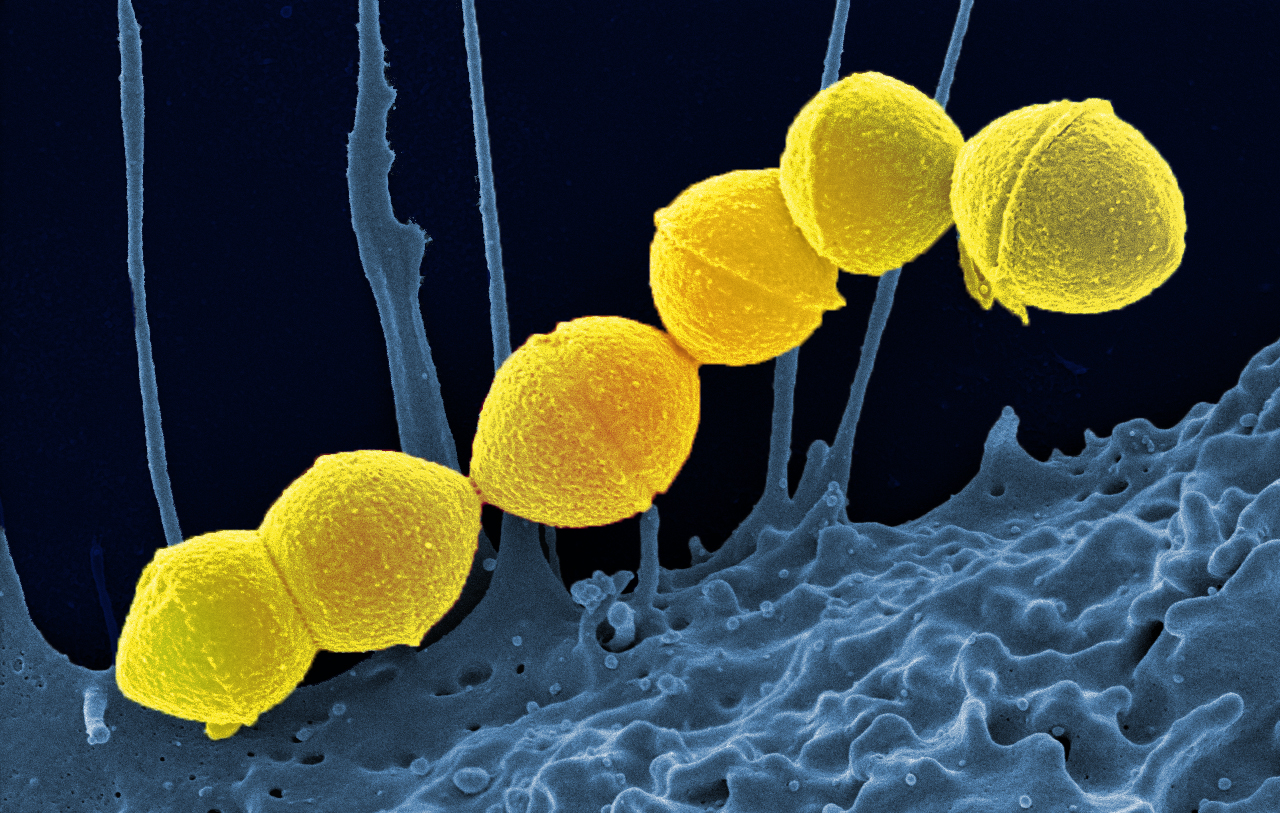Image by: NIAID; CC BY 2.0 DEED
Japan has been facing an increase in cases of streptococcal toxic shock syndrome in recent months.1 Streptococcal toxic shock syndrome (STSS) is a severe illness caused by the Streptococcus pyogene bacteria, which is also known as group A streptococcus or group A strep.2 Infection with this bacteria can present with a wide range of severity from a more mild strep throat condition to a more severe STSS infection.3 The group A strep bacteria is also highly contagious and can spread through respiratory droplets released into the air when talking or coughing, as well as through direct contact with infected sores on the skin.3
While symptoms of STSS often start off mild with chills and a fever, the condition soon progresses into shock, which is a sudden drop in blood flow throughout the body.2,8 This can lead to organ failure and even death.8 Additionally, STSS infections in Japan have been associated with necrotizing fasciitis, a life-threatening condition that causes tissues in the skin layers to die.4 Although reaching this severe stage is very rare, it is estimated that STSS leads to the deaths of up to 50% of individuals who develop the illness.5 Due to this severity, individuals with STSS are usually hospitalized and treated with antibiotics, including penicillin and clindamycin.2
Closely monitoring the situation, Japan’s National Institute of Infectious Diseases continues to provide reports and assessments of STSS. As of June 25, 2024, Japan has reported 1060 cases of STSS, which is greater than the 941 cases that were reported in the country for all of 2023.1,6 Seventy seven deaths have also been reported by the country so far this year.4 Japan is not alone in facing an increase in STSS cases, as other countries, including the United States and United Kingdom, have recorded more cases than average in recent years as well.7
Public health officials remain uncertain about the cause of this increase. Some experts believe that it may be related to the easing of pandemic-era restrictions.4 The fairly recent lifting of quarantines and lockdowns set into place during the COVID-19 pandemic may have caused more people to interact with one another and more infections to spread among communities as a result.4 To make this issue more complicated, some countries, including the United States, had been facing increased cases of group A strep infections before the COVID-19 pandemic even occurred.4 Therefore, this increase may not be solely caused by public health measures taken during the pandemic and is most likely due to a variety of factors.
Regardless of the exact cause of these rising STSS cases in Japan, it is important that all individuals continue to take precautionary measures—including maintaining proper handwashing and respiratory hygiene practices—to protect the health of all populations.2
Sources:
- https://www3.nhk.or.jp/nhkworld/en/news/20240611_17/
- https://www.cdc.gov/group-a-strep/hcp/clinical-guidance/streptococcal-toxic-shock-syndrome.html
- https://www.cdc.gov/group-a-strep/about/index.html
- https://www.healthline.com/health-news/cases-of-this-deadly-bacterial-infection-are-rising-in-japan-experts-want-to-know-why#How-to-identify-and-treat-STSS
- https://ndc.services.cdc.gov/case-definitions/streptococcal-toxic-shock-syndrome-2010/#:~:text=STSS%20may%20occur%20with%20infection,fatality%20rate%20may%20exceed%2050%25.
- https://www.niid.go.jp/niid/en/survaillance-data-table-english/12714-idwr-sokuho-data-e-2424.html
- https://www.nbcnews.com/health/health-news/japan-deadly-infections-group-a-strep-bacteria-rcna157781
- https://www.mayoclinic.org/first-aid/first-aid-shock/basics/art-20056620#:~:text=Shock%20is%20a%20critical%20condition,getting%20enough%20blood%20or%20oxygen.


